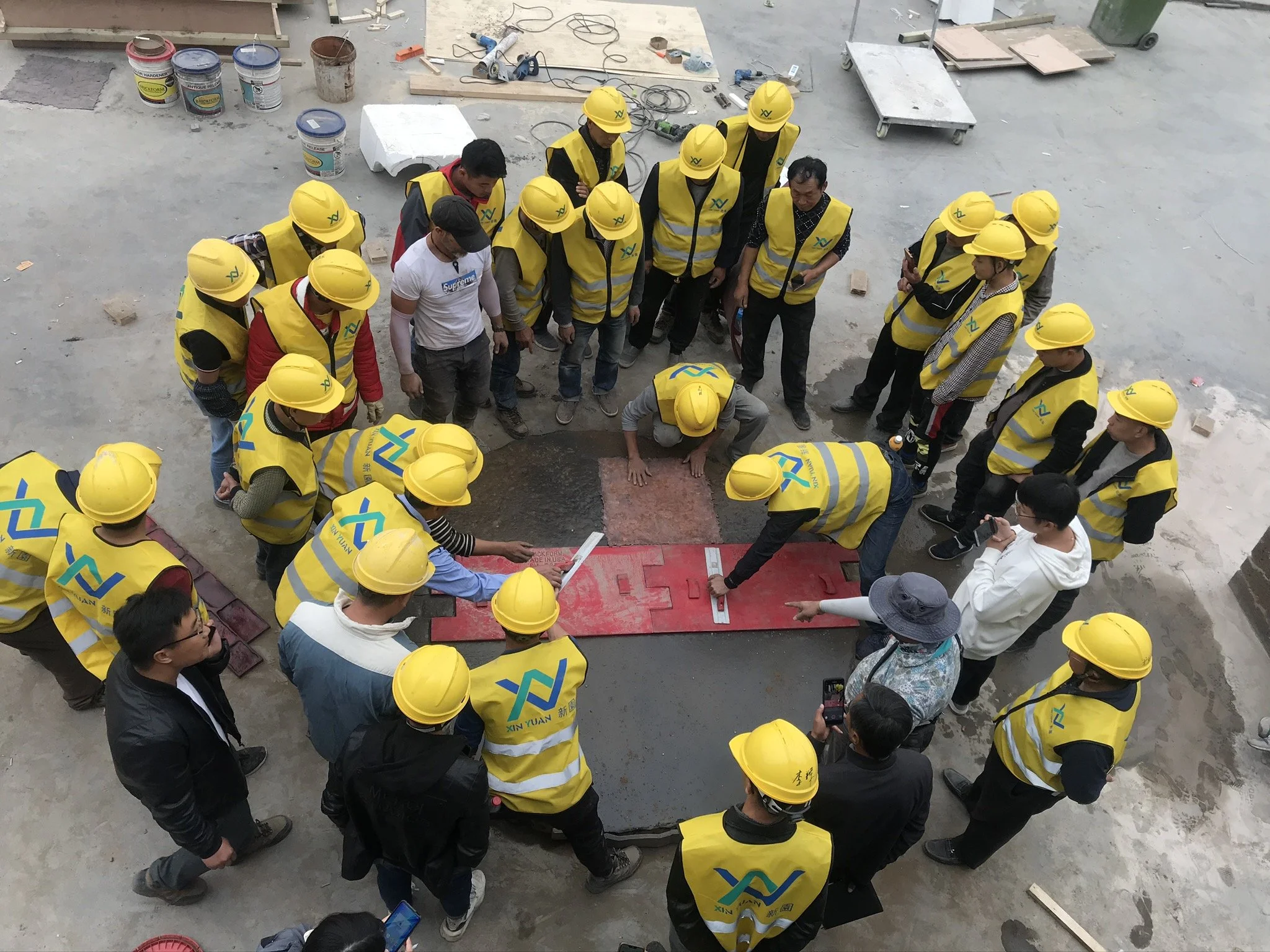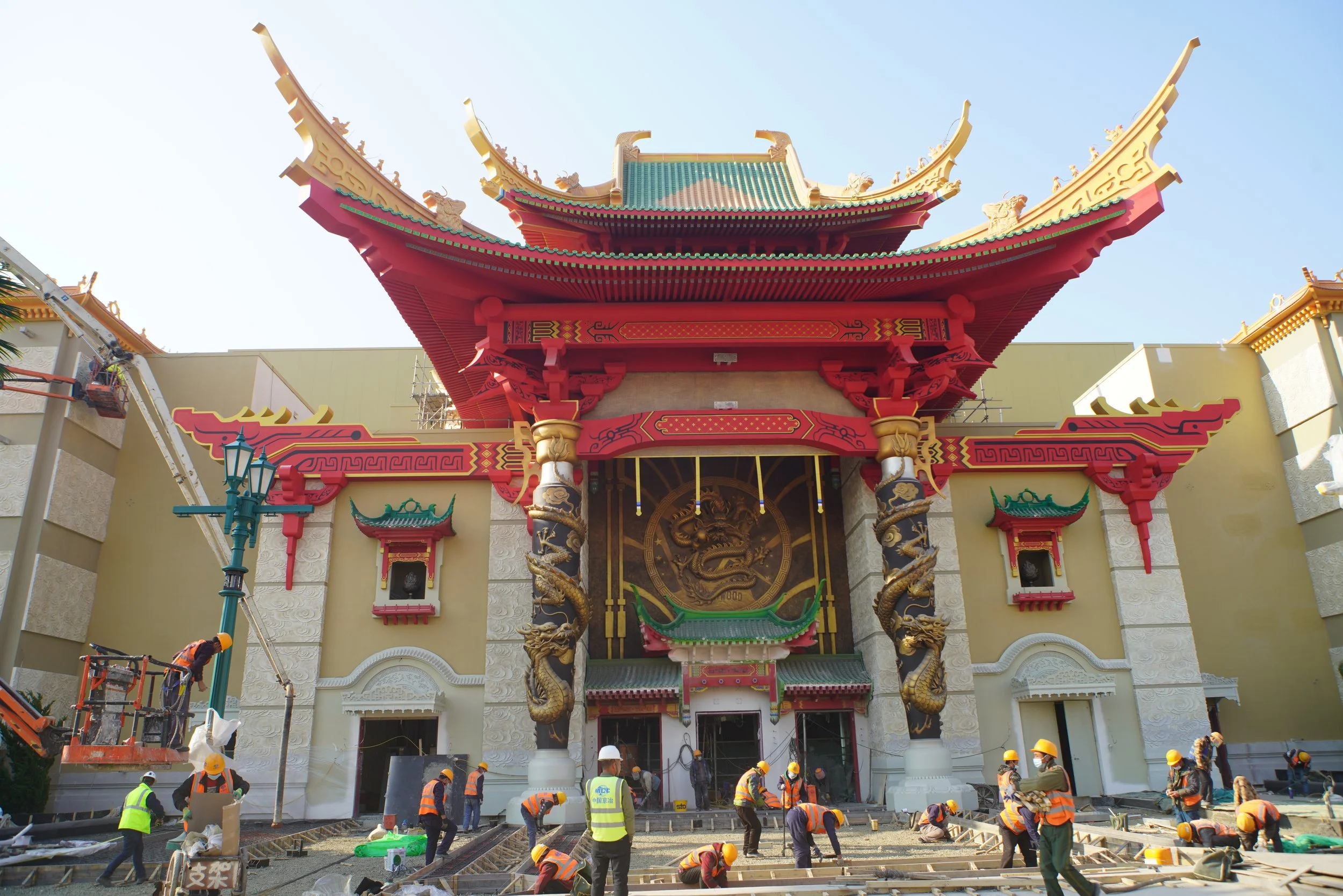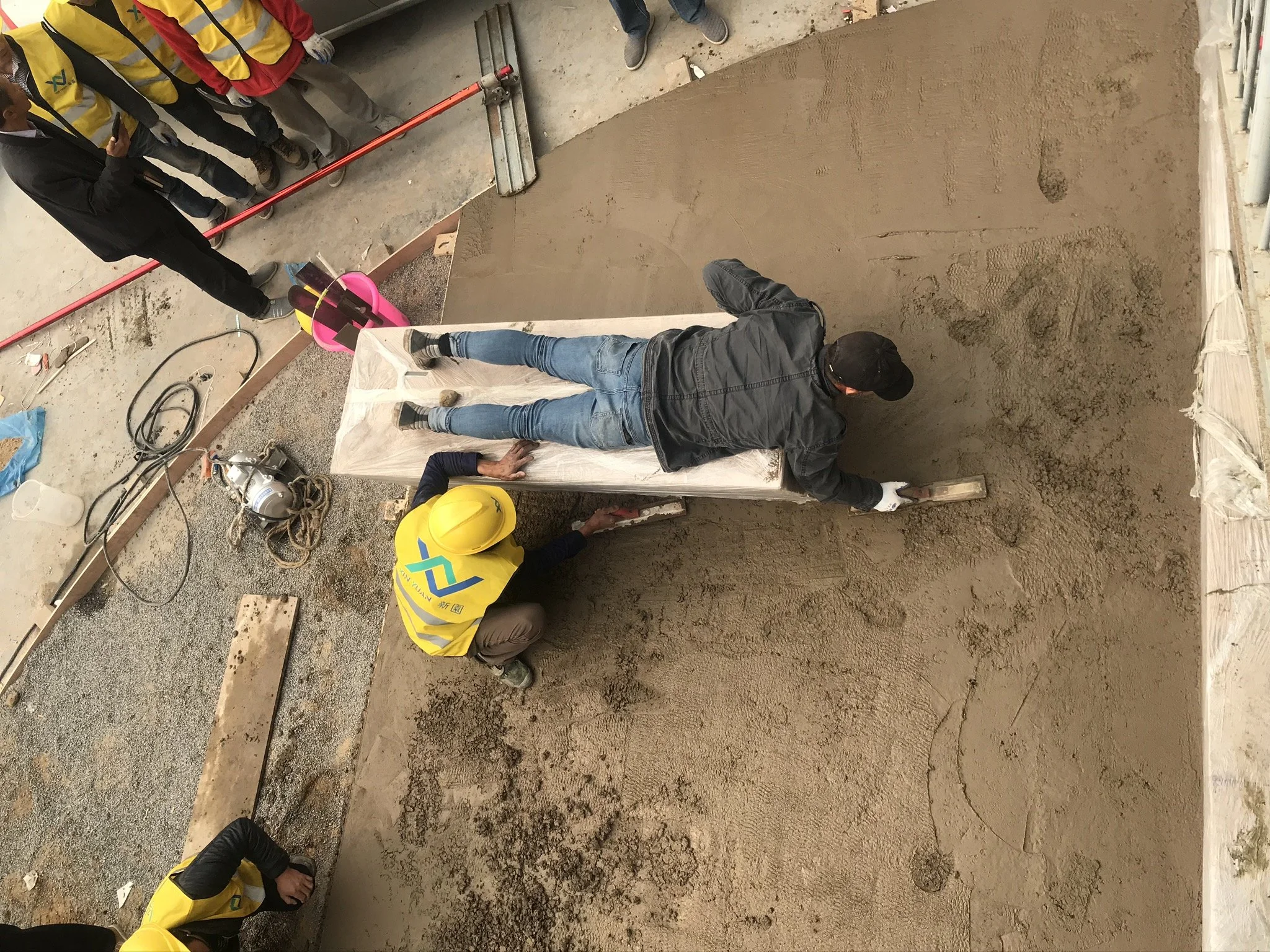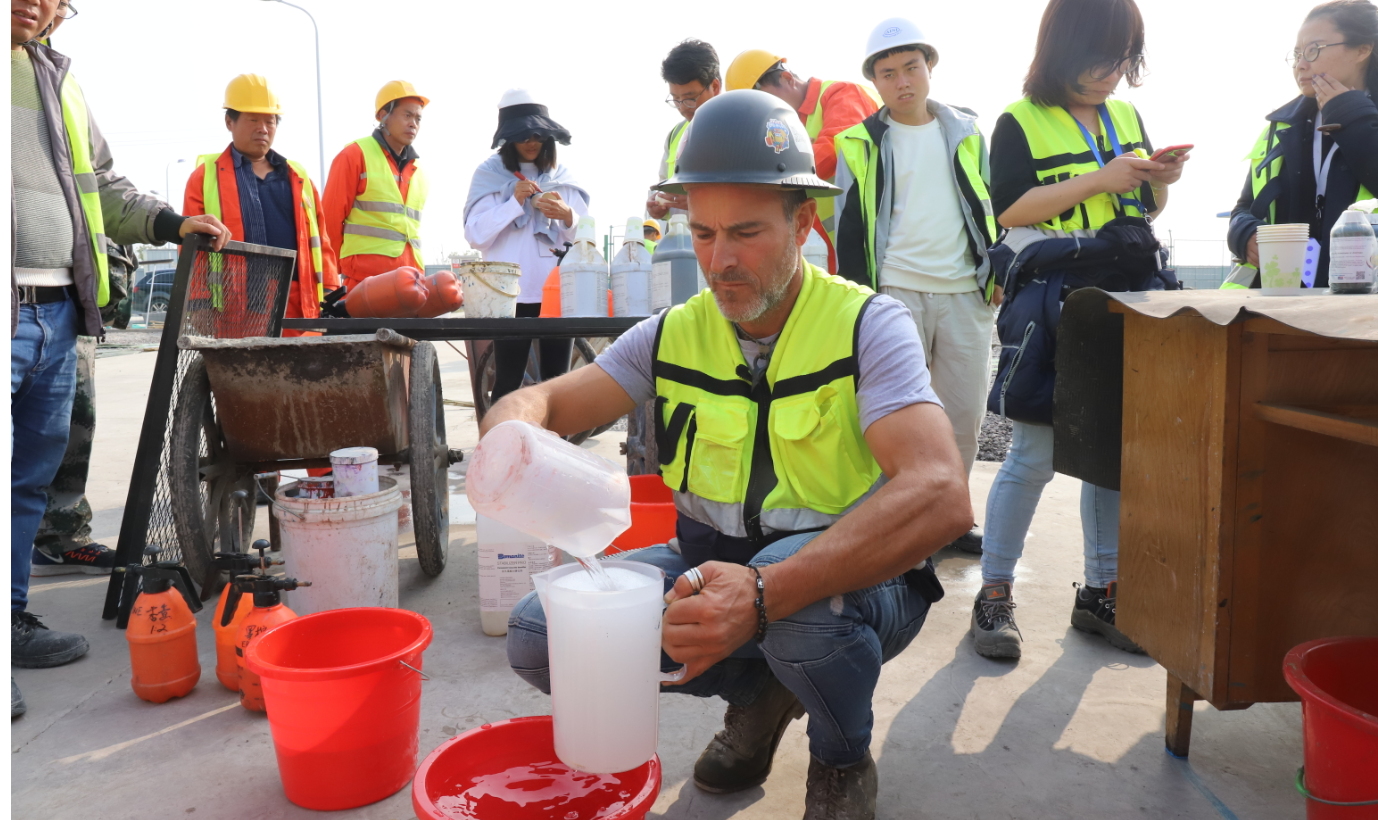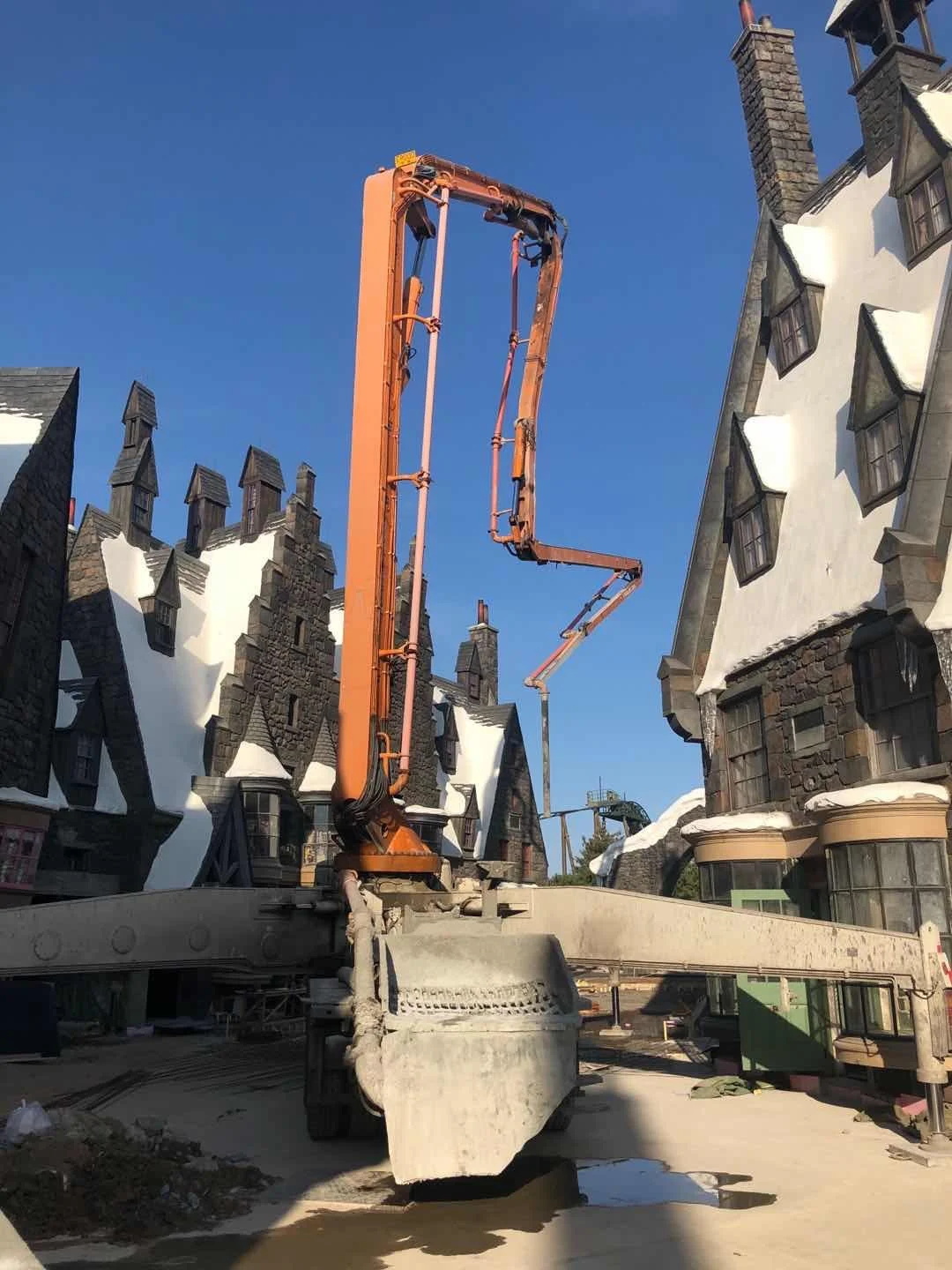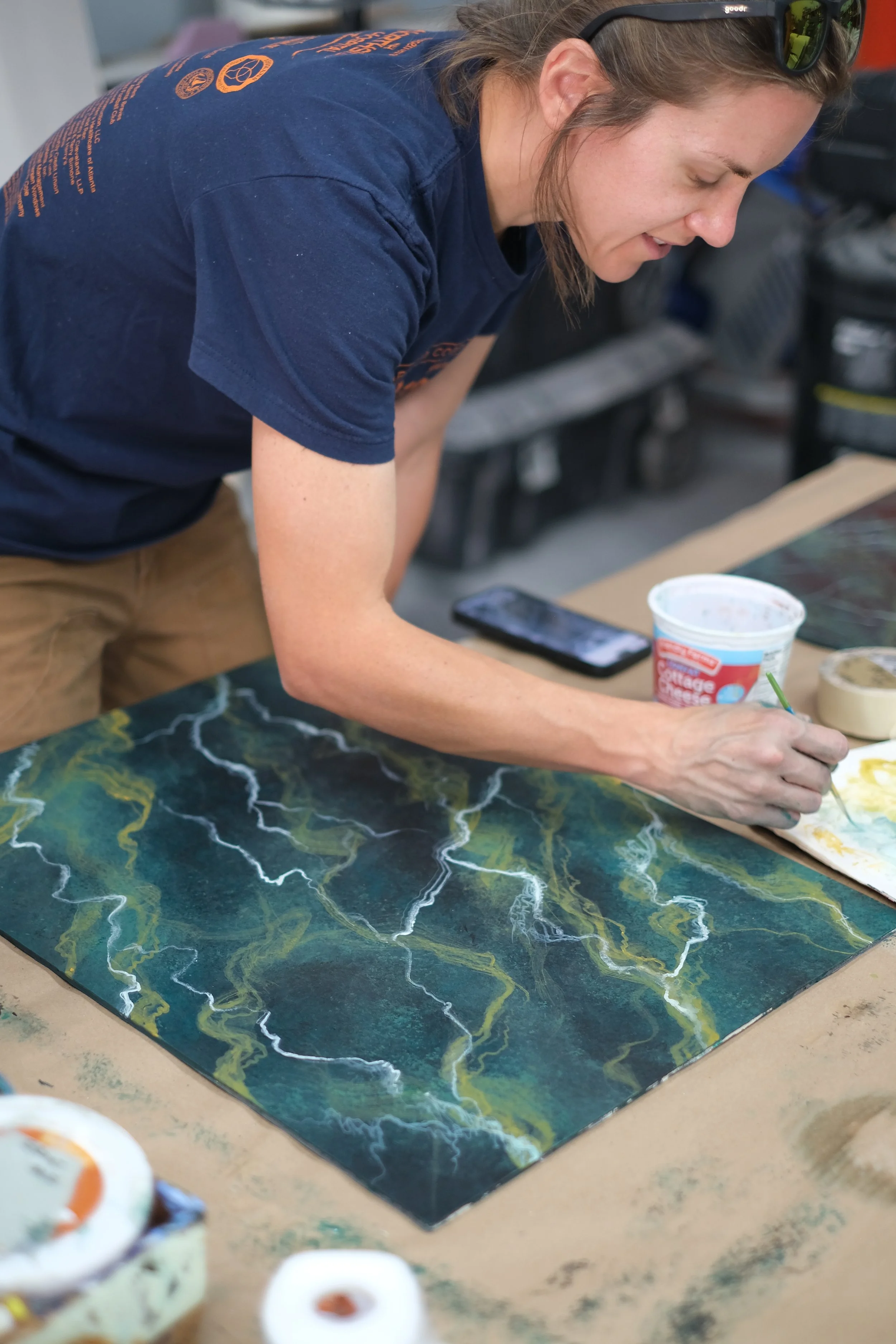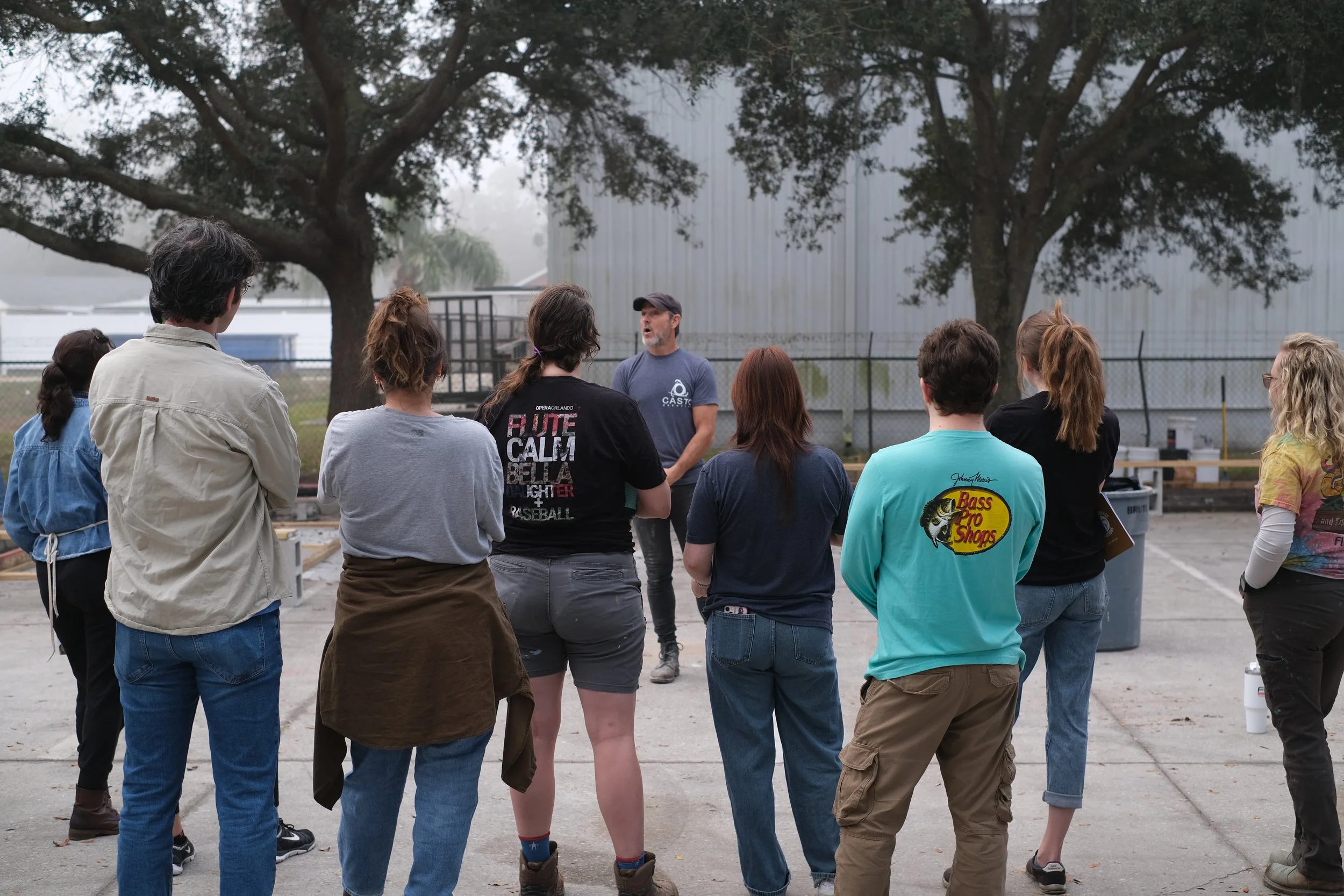Expert Q&A — A Conversation with Matthew Casto
Industry insights, career reflections, and timeless advice from a master of themed construction.
On Themed Construction, Mentorship, and the Future of the Industry
When it comes to themed construction, few names carry the depth of experience and influence that Matthew Casto does. With over 30 years of international work under his belt — including landmark projects like Shanghai Disneyland, Universal Studios Beijing, and the new Epic Universe — Matthew has shaped immersive environments that transport millions.
As CASTO’s CEO, his focus goes beyond just creative direction. He’s a champion of constructability — a philosophy that ensures artistic vision and technical precision can coexist. It’s about making sure what’s imagined can actually be built, without compromising storytelling or design integrity.
In this week’s Casto Corner, we sit down with Matthew to trace his journey from early childhood job sites to leading global projects. We discuss the craft of themed finishes, the challenges of bringing concept to reality, and the urgent need to pass on knowledge to the next generation of makers, artisans, and builders. Whether you're new to the industry or a seasoned pro, his insights offer a powerful reminder of why this work matters — and where it’s headed next.
Q: How did you first get involved in the world of Themed Construction?
Matthew:
I was introduced to construction at a really young age—probably around five years old. My dad used to take me out in the summers to pour concrete with him, and I swore back then that I’d never go into concrete. But after college, I realized I actually loved the creative side of it. That’s what drew me into themed construction.
My real entry into the themed world came when I started working for Bomanite Corporation. They were global leaders in decorative concrete and were involved in major themed projects for Disney and Universal. I was fascinated by how concrete could be used not just structurally, but artistically—to tell stories, to build worlds. That’s when I started focusing on the creative side: themed finishes. It’s the decorative layer, the artistic representation that transforms standard construction into an immersive experience.
Q: You’ve worked on massive projects around the world. What’s one that stands out and why?
Matthew:
I think whatever’s most recent tends to feel the most vivid, but one project that truly stands out is Universal Studios Beijing. It was, without a doubt, one of the most challenging and rewarding experiences of my career.
Building a theme park is already an incredibly complex task — you’re coordinating hundreds of trades, managing tight timelines, and delivering high-level artistic and technical work all at once. Now imagine doing all of that in the middle of a global pandemic, in a foreign country, with travel restrictions and limited access. That was the reality of Beijing.
Despite the obstacles, it became one of the most collaborative projects I’ve ever been a part of. People from different countries, industries, and specialties had to step outside their usual roles to help one another. There was this incredible sense of unity — people cross-trained, supported unfamiliar tasks, and pulled together to make it happen. It wasn’t just a construction project; it was a global effort grounded in creativity, resilience, and teamwork.
“Universal Beijing wasn’t just a construction project — it was a global effort. In the face of a pandemic, people from different countries and industries came together, stepped outside their roles, and created something extraordinary.”
Q: How would you describe the relationship between artistic vision and technical execution in your work?
Matthew:
There’s often a significant gap between creativity, production, and operations—and really, there are two gaps. The first is between the creative concept and the production process. Creativity requires visionaries who imagine things that may have never been done before. Translating those ideas into something that can be clearly documented, built, and budgeted for is incredibly complex.
The second gap comes when the project transitions from production to operations. Operational teams view the finished product differently than those who built it. Their priorities include safety, functionality, maintenance, and guest experience. So, even when something looks perfect creatively, it might raise concerns operationally.
Bridging these gaps is the role of the production art director. They’re the ones who understand both creative intent and the practical realities of construction and operations. They serve as translators—helping different teams align on the vision and maintain design integrity through every phase of the project. Without someone in that role, a lot can be lost in translation. And unfortunately, that gap often goes unappreciated — until something breaks down or the original design intent gets watered down. That’s why I believe so strongly in constructability: it’s about making sure there’s alignment from imagination to execution, and all the way through to the guest experience.
Why does that gap exist in the first place? It usually comes down to contracts, deadlines, and budgets. Once a design is handed over, the construction team is under pressure to deliver on time and within budget. In that process, there’s often very little time—or incentive—to deeply engage with the creative intent behind the design. And that’s where things get lost.
I’ll give you a simple example. When I was working on Shanghai Disneyland, there were around 5,000 workers on site—most of them farmers brought in on 11-month contracts. Many had never even been to a theme park, let alone imagined what one was supposed to look like. So when the creative team designed a crooked building—something meant to be whimsical or story-driven—some of the workers would try to “fix” it, thinking it was a mistake. In their culture, a well-built structure is straight. You can’t blame them—it just means someone has to be there to explain why we’re doing what we’re doing.
That’s where the presence of a production art director becomes crucial. Someone who understands the people, the culture, the constraints—and still fights for the creative intent. Because without that advocacy, the most unique, magical elements of a project can be misunderstood, watered down, or even eliminated. And that’s not why people come to theme parks. They come for the exceptional. That special spark—that centerpiece that ties the whole story together—can easily be lost without someone guarding it through the entire process.
“The key to successful theme construction is ensuring that the visionary work on paper translates seamlessly into something that can be safely and efficiently experienced by guests.”
Q: Why are themed finishes so critical to the guest experience?
Matthew:
A guest’s experience is, in many ways, shaped by their ability to fully immerse themselves in a new environment. It’s not just about rides or attractions—it’s about escapism. People want to step away from their daily routines, their busy lives, and enter a space that feels completely different.
We seek that kind of escape all the time—when we visit churches, museums, parks, or zoos. Theme parks just take it a step further by fabricating entire worlds. And in those worlds, themed finishes are essential. They create the illusion. They build the believable "fakeness"—the visual language that tells the story and allows guests to suspend disbelief.
Imagine being in Hong Kong, yet shopping in a beautifully crafted plaza that looks like Venice. You may never get to travel to Venice, but that experience becomes possible through themed design. Or think of someone standing inside Hogwarts Castle at Universal Studios—you’re not in England, but for a moment, it feels like you are. That’s the power of themed finishes. They allow people to live in the story.
Q: What’s a challenge in the industry that doesn’t get talked about enough?
Matthew:
One of the biggest challenges we’ve already touched on is having enough production and art direction teams on site. But I’d go a step further and say that, especially here in the United States, the number one challenge we’re facing right now is the decline of skilled artisans.
As our society becomes increasingly digital, fewer young people are drawn to the trades. The idea of working with your hands — of building something tangible — is losing traction. And yet, our industry depends on painters, concrete masons, scenic sculptors, lighting specialists—people who can physically shape environments on site. The kind of artistry that was once abundant in millwork, mold making, and fine detailing is disappearing as seasoned craftsmen retire, and fewer are stepping up to take their place.
“In the world of themed finishes, the human hand is still irreplaceable. If we don’t invest in the next generation of artisans, we risk losing more than a craft — we risk losing an entire form of storytelling.”
This shortage has real consequences. If we design something extraordinary that requires intricate artisan work—but those artisans aren’t available—the cost to execute that design skyrockets. Eventually, it becomes unaffordable, forcing us to simplify the vision or lose some of the special details that make these environments so magical.
We’ve seen this pattern before. Centuries ago, Europe’s great cathedrals were built by master craftsmen whose techniques were passed down through generations. But when those artisans were gone, much of that knowledge and beauty was lost. And today, we’re facing a similar crossroads.
Yes, we’re innovating—3D printing, for example, is changing the way we build. But in the world of themed finishes, the human hand is still irreplaceable. If we want to preserve the magic of this craft, we need to invest energy into cultivating the next generation of makers. Because without artisans, we risk losing not just a skill set—but an entire form of storytelling.
Q: CASTO emphasizes the idea of Constructability. How do you define it, and why is it important in themed construction?
Matthew:
Constructability, simply put, is the balance between structural integrity, functionality, and aesthetics. Something isn’t truly “constructible” if it looks beautiful but falls apart—or if it’s built strong and looks great, but doesn’t function properly for its intended use.
For example, if a surface doesn’t meet anti-slip requirements, or if it reflects light in the wrong way, it’s not functional—even if it looks incredible. That’s why we always have to ask: Can it be built? Will it perform? Will it last? Constructability demands that we consider where something is going to be used, how it’s going to be used, and who is going to interact with it—whether it's indoors, outdoors, exposed to weather, or heavy foot traffic.
To me, constructability is like the invisible framework that holds a project together—much like a themed art director does during production. It brings harmony to the design process and grounds creativity in reality. It influences every decision: from design and material selection to how many workers are needed, how long it will take, and whether the project can stay on budget.
Great design is only part of the equation. Constructability ensures that the vision doesn’t just exist on paper—it gets built, it works, and it endures.
Q: What advice would you give to young professionals who are entering—or already working in—the themed construction industry, especially those with creative or technical backgrounds?
Matthew:
My biggest piece of advice? Know your materials.
You can design on paper or in software all day long, but until you’ve touched the materials—or at the very least, developed a strong understanding of how they behave—you won’t be able to fully grasp what it takes to bring your designs to life. And in this industry, that hands-on understanding is absolutely essential.
So seek out training. Look for opportunities to get on a job site. I always tell students and recent grads who dream of working for a theme park: if you can’t get hired by a theme company right away, go work for a vendor. Join a concrete company, a scenic paint studio, a mold-making shop, an audio supplier—anywhere that builds the kinds of things you hope to design.
Doing that gives you a real appreciation for how these materials function, how they’re fabricated, and how much effort it takes to execute a creative vision. And over time, it makes you a better designer—someone vendors want to work with, because you understand their world too.
Ultimately, this kind of experience helps bridge the gap between creative and production. You become a liaison—someone who speaks both languages. And that’s exactly the kind of professional this industry needs more of.
“The best designers are the ones who understand the materials they work with. It’s that hands-on experience that makes a real difference.”
Q: You’re known for mentoring and training others. What’s been the most rewarding part?
Matthew:
Mentorship, to me, isn’t just a responsibility—it’s an opportunity. Yes, we have an obligation as a society to pass down knowledge, but what people often don’t realize is how much you gain when you mentor others.
Personally, some of the most rewarding experiences in my career have come through mentoring the next generation. I’m constantly inspired by their energy, curiosity, and hunger to learn. Every time I lead a training or workshop, I walk away more motivated—not just to do better work, but to be a better person. That enthusiasm is contagious.
Professionally, it’s just as enriching. I’ve had the privilege of working in over 68 countries and training thousands of professionals. But I always say—I learn just as much as I give. There are incredibly talented and insightful people out there, and I see myself as someone who simply carries knowledge from one place to the next—like a butterfly moving from flower to flower, sharing what I’ve gathered along the way.
In the end, we all benefit. It’s a cycle—each generation builds on the last. And if we’re serious about protecting the future of this industry, then mentoring isn’t optional. It’s essential.
“Every generation builds on the last. Mentorship is the cycle that keeps our industry growing.”
Matthew Casto at Universal Studios Epic Universe
The Heart of Mentorship: A Shared Journey
For Matthew, mentorship isn’t just about passing down skills—it’s about growing together.
“Every time I do a training, I walk away with more motivation and inspiration to do a better job and be a better person.”
It’s this reciprocal energy—learning as much as he teaches—that defines his approach. By viewing each interaction as a two-way exchange, Matthew reminds us that leadership in themed construction isn’t about standing above others—it’s about standing beside them. His global experience and hands-on knowledge make him a teacher, but his humility and openness make him a mentor.
Whether he’s working on a multimillion-dollar project or guiding a student through their first sample board, Matthew’s message stays the same: support the people, delve into the process, and never stop learning. Matthew’s story reminds us that themed construction isn’t just about buildings—it’s about storytelling, community, and preserving craftsmanship in a rapidly changing world. His call to action is clear: honor the past, innovate for the future, and never stop building.
Want more expert interviews like this one?
Subscribe to The Casto Corner for monthly stories, insights, and industry updates—delivered right to your inbox.
We want to hear from you!
Have you had a mentor who shaped your journey—or are you mentoring the next generation yourself? Share your story in the comments below. Let’s celebrate the people who helped us build more than just structures—they helped us build purpose.


